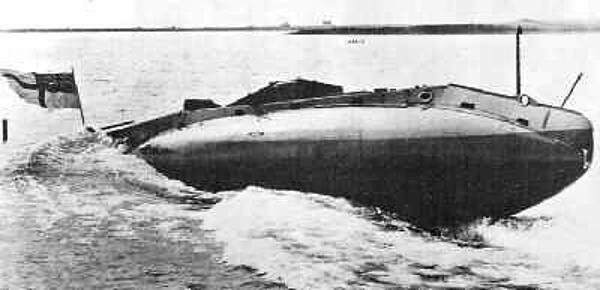Submarines
As World War One developed, the Admiralty began to take a greater interest in the development of submarines and their success as a weapon of war was greatly boosted.
One of the larger issues that faced submarine crews was the fact that they could easily be targeted by planes and surface ships if they were not submerged, so it became important for an underwater listening device to be developed.
In 1915, Reginald Fessenden developed the Fessenden oscillator, which allowed submarines to both deliver and receive messages as well as to detect ships while submerged. It was even possible to send Morse code underwater thanks to the use of a heavy diaphragm, which used an electric current to deliver messages up to 30 miles.
Unfortunately, these oscillators were unable to direct messages, so it was possible for enemy ships to detect and decipher them, leaving the submarines vulnerable. The clarity of the message could also be affected by engine noise or other noises made by the submarine, so the sound produced by the oscillator varied considerably.

Throughout the war, the wireless technology on submarines rapidly improved, with the invention of the telescopic masts one of the most significant. This invention allowed the submarine to surface and dive without having to send out a crewman to dismantle the mast, which could be raised and lowered by compressed air - even underwater.
Another important invention was that of the gyro compass, which was designed to show true direction of travel at all times. In fact, it could detect lag by around a quarter of a degree, so the correct course could always be steered. This was important as the US Naval Proceedings revealed that a two degree lag could lead to an incorrect course of one mile for every 30 miles travelled, which was significant for a submarine. However, the gyro compass was not correct at all times due to the impact of rough seas on its mechanism, which could leave submarines heading away from their desired course, unawares.
A further development during the war was that of the torpedo. Britain developed three new types of torpedo during World War One, including:
1: A torpedo powered by oxygen. This was soluble so did not produce a telltale wake, unlike those powered by compressed air.
2: A circling torpedo. This would reach a pre-set distance and then circle, which meant that it had the potential to hit a new target had it missed its first.
3: An acoustic or magnetic torpedo. This was attracted to noise made by a ship’s propellers. It had little use in World War One but was set to become incredibly important in World War Two.
MLA Citation/Reference
"Submarines". HistoryLearning.com. 2025. Web.
